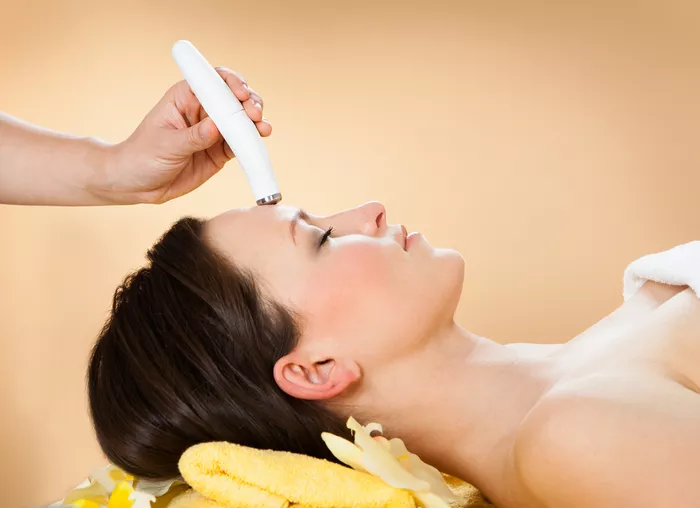Microdermabrasion and Botox are two popular cosmetic procedures that can help improve the appearance of the skin. Microdermabrasion exfoliates the outermost layer of the skin, while Botox temporarily reduces the appearance of wrinkles and fine lines. If you’re considering both treatments, you may wonder if it’s possible to get Botox after microdermabrasion. In this article, we will explore the combination of microdermabrasion and Botox, their potential benefits, and important considerations to keep in mind.
Understanding Microdermabrasion and Botox
Microdermabrasion is a non-invasive cosmetic procedure that involves exfoliating the skin’s outer layer using tiny crystals or a diamond-tipped wand. This process helps remove dead skin cells, improve skin texture, and stimulate collagen production. Microdermabrasion is commonly used to address concerns such as fine lines, wrinkles, acne scars, sun damage, and uneven skin tone.
Botox, on the other hand, is a neurotoxin that temporarily relaxes the muscles responsible for causing wrinkles and fine lines. It is typically injected into specific areas of the face, such as the forehead, crow’s feet, and frown lines, to reduce the appearance of dynamic wrinkles and create a smoother, more youthful appearance. Botox results typically last for several months before gradually wearing off.
Getting Botox After Microdermabrasion
The combination of microdermabrasion and Botox is generally considered safe and can provide complementary benefits. However, there are important considerations to keep in mind:
-
Timing
It is advisable to wait for a certain period of time after microdermabrasion before getting Botox. This allows the skin to fully recover from the exfoliation process and reduces the risk of complications. The specific timing may vary based on the individual’s skin condition and the recommendations of the treating professionals. It is best to consult with your dermatologist or cosmetic surgeon to determine the appropriate waiting period.
-
Consultation
Before considering the combination of microdermabrasion and Botox, it is important to schedule a consultation with a qualified medical professional. They will assess your skin condition, discuss your goals, and provide recommendations based on your unique needs. This consultation is crucial for determining if you are a suitable candidate for both procedures and for understanding the potential benefits and risks.
-
Treatment Plan
Your medical professional will create a personalized treatment plan based on your specific concerns. This plan may involve a series of microdermabrasion sessions followed by Botox injections at a later stage. The treatment plan may also include other complementary procedures, such as chemical peels or dermal fillers, to achieve the desired results.
Benefits of Combining Microdermabrasion and Botox
Combining microdermabrasion and Botox can offer several benefits for individuals seeking skin rejuvenation:
-
Enhanced Results
Microdermabrasion and Botox target different aspects of skin aging. Microdermabrasion exfoliates the skin and stimulates collagen production, resulting in improved texture and tone. Botox, on the other hand, relaxes muscles and reduces the appearance of wrinkles. When used together, these treatments can enhance the overall rejuvenation of the skin, providing more comprehensive results.
-
Addressing Multiple Concerns
The combination of microdermabrasion and Botox allows for addressing multiple skin concerns simultaneously. Microdermabrasion can improve the texture of the skin and reduce the appearance of scars and sun damage, while Botox can target dynamic wrinkles and fine lines. This comprehensive approach can lead to a more youthful and refreshed appearance.
-
Collagen Stimulation
Microdermabrasion stimulates collagen production in the deeper layers of the skin. When combined with Botox, which temporarily relaxes the muscles, the increased collagen production can contribute to improved skin elasticity and firmness. This can result in a more youthful and radiant complexion.
Important Considerations
While the combination of microdermabrasion and Botox can offer numerous benefits, it is important to consider the following factors:
-
Individual Suitability
Not everyone is a suitable candidate for both microdermabrasion and Botox. Your medical professional will evaluate your skin condition, medical history, and goals to determine if you are a good candidate for the procedures. They will also consider any contraindications or potential risks associated with combining the treatments.
-
Professional Expertise
To ensure optimal results and minimize the risk of complications, it is crucial to seek the services of qualified and experienced medical professionals. Choose a reputable clinic or medical spa with licensed practitioners who have a thorough understanding of both microdermabrasion and Botox procedures.
-
Realistic Expectations
It is important to have realistic expectations regarding the results of microdermabrasion and Botox. While these treatments can significantly improve the appearance of the skin, they are not permanent solutions. The effects of microdermabrasion are temporary and require maintenance sessions for long-lasting results. Botox results typically last for several months before gradually wearing off.
-
Post-Treatment Care
Following both microdermabrasion and Botox, it is important to follow the post-treatment care instructions provided by your medical professional. This may include avoiding excessive sun exposure, using gentle skincare products, and avoiding certain activities or treatments that may interfere with the healing process.
Conclusion
In conclusion, the combination of microdermabrasion and Botox can be a beneficial approach to skin rejuvenation. Microdermabrasion exfoliates the skin and stimulates collagen production, while Botox temporarily relaxes muscles and reduces the appearance of wrinkles. By consulting with a qualified medical professional and following a personalized treatment plan, individuals can achieve enhanced results, address multiple skin concerns, and enjoy a more youthful and refreshed appearance. However, it is important to consider individual suitability, seek professional expertise, have realistic expectations, and follow proper post-treatment care for optimal outcomes.


